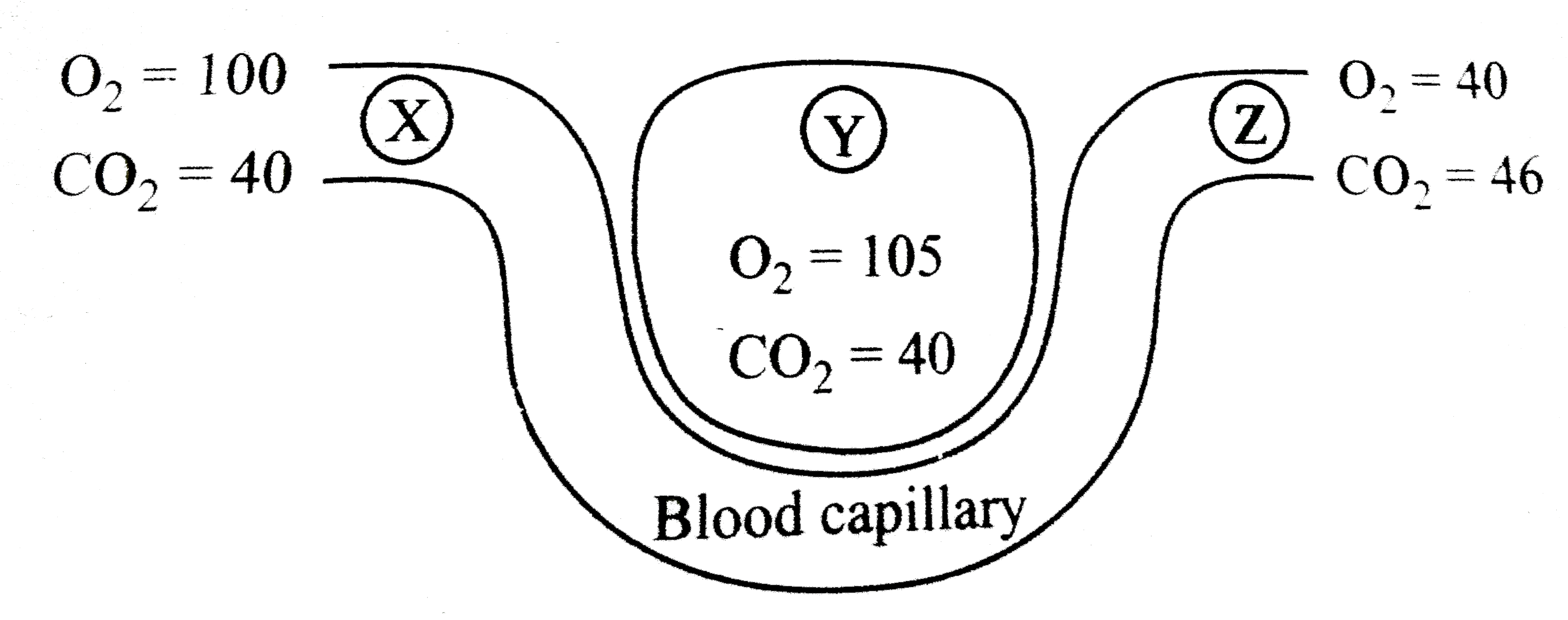Bulk of carbon dioxide (CO2) released from body tissues into the blood is present as
bicarbonate in blood plasma and RBCs
free CO2 in blood plasma
70% carbamino-haemoglobin and 30% as bicarbonate
carbomino-haemoglobin in RBCs
The correct Answer is:A
To determine the bulk of carbon dioxide (CO₂) released from body tissues into the blood, we can follow these steps:
Step 1: Understand the forms of CO₂ in the blood
Carbon dioxide can exist in different forms in the blood. The primary forms include:
- Dissolved CO₂ in plasma
- Bicarbonate ions (HCO₃⁻)
- Carbamino compounds (bound to hemoglobin)
Step 2: Identify the predominant form of CO₂
When CO₂ is released from body tissues, it primarily enters the bloodstream. The majority of CO₂ is converted into bicarbonate ions through a series of reactions involving carbonic acid (H₂CO₃).
Step 3: The conversion process
In the red blood cells (RBCs), CO₂ reacts with water to form carbonic acid, which then dissociates into bicarbonate ions and hydrogen ions:
CO₂+H₂O↔H₂CO₃↔HCO₃⁻+H⁺
Step 4: Quantifying the forms of CO₂
Research indicates that about 70% of CO₂ is transported as bicarbonate ions in the plasma and red blood cells, while a smaller percentage is transported as dissolved CO₂ or as carbamino compounds.
Step 5: Conclusion
Based on the above understanding, the bulk of carbon dioxide released from body tissues into the blood is present as bicarbonate in blood plasma and red blood cells.
Final Answer
The correct answer is bicarbonate in blood plasma and RBCs.
---
Carbon dioxide can exist in different forms in the blood. The primary forms include:
- Dissolved CO₂ in plasma
- Bicarbonate ions (HCO₃⁻)
- Carbamino compounds (bound to hemoglobin)
When CO₂ is released from body tissues, it primarily enters the bloodstream. The majority of CO₂ is converted into bicarbonate ions through a series of reactions involving carbonic acid (H₂CO₃).
In the red blood cells (RBCs), CO₂ reacts with water to form carbonic acid, which then dissociates into bicarbonate ions and hydrogen ions:
CO₂+H₂O↔H₂CO₃↔HCO₃⁻+H⁺
Research indicates that about 70% of CO₂ is transported as bicarbonate ions in the plasma and red blood cells, while a smaller percentage is transported as dissolved CO₂ or as carbamino compounds.
Based on the above understanding, the bulk of carbon dioxide released from body tissues into the blood is present as bicarbonate in blood plasma and red blood cells.
The correct answer is bicarbonate in blood plasma and RBCs.
Topper's Solved these Questions
- BIOTECHNOLOGY : PRINCIPLES AND PROCESSESBOOK - TRUEMEN BIOLOGY ENGLISHCHAPTER - BIOTECHNOLOGY : PRINCIPLES AND PROCESSESEXERCISE - MULTIPLE CHOICE QUESTIONS
124 Videos
- BREATHING AND EXCHANGE OF GASES BOOK - TRUEMEN BIOLOGY ENGLISHCHAPTER - BREATHING AND EXCHANGE OF GASES EXERCISE - MULTIPLE CHOICE QUESTIONS
199 Videos
Similar Questions
Knowledge Check
The given diagram shows a blood capillary in close contact with structure Y. The relative concentration (in units) of carbon dioxide (CO2) and oxygen (O2) are given at three different sites.

Which of the following statements is correct ?Aa) Y is an alveolus and blood flow is from X to ZBb) Y is an alveolus and blood flow is Z to XCc) Y is a muscle and blood flow is from X to ZDd) Y is a muscle and blood flow is from Z to XMost carbon dioxide in blood is in the form of:
Acarbon dioxideBcarbonic acidCcarbon monoxideDhydrogencarbonateThe carbon dioxide is transported via blood to lungs mostly
Ain combination with haemoglobin onlyBdissolved in blood plasmaCin the form of bicarbontesDas carbaminohaemoglobin.
Carbon dioxide is carried in the blood mainly as
View SolutionWhich of the following statements are true/false
A.The blood transports CO2 comparatively easily because of its higher solubility
B.Approximately 8.9% of CO2 is transported being dissovled in the plasma of blood
C. The carbon dioxide produced by the tissues, diffuses passively into the blood stream and passes into red blood corpsucles and react with water to form H2CO3
D.The chlorde ions diffuse from palsma into the erythrocytes to maintain ionic balance
View SolutionDescribe the various ways by which carbon dioxide is transported by the blood from the tissues to the alveoli.
View SolutionCalculate :
the volume measured at S.T .P. of carbon dioxide released when 8.40 g of sodium hydrogen carbonate is decomposed according to the equation :
2NaHCO3→Na2CO3+H2O+CO2
(Na = 23, H = 1, C = 12, O = 16)
View SolutionCalculate :
the mass measured at S.T .P. of carbon dioxide released when 8.40 g of sodium hydrogen carbonate is decomposed according to the equation :
2NaHCO3→Na2CO3+H2O+CO2
(Na = 23, H = 1, C = 12, O = 16)
View Solution
